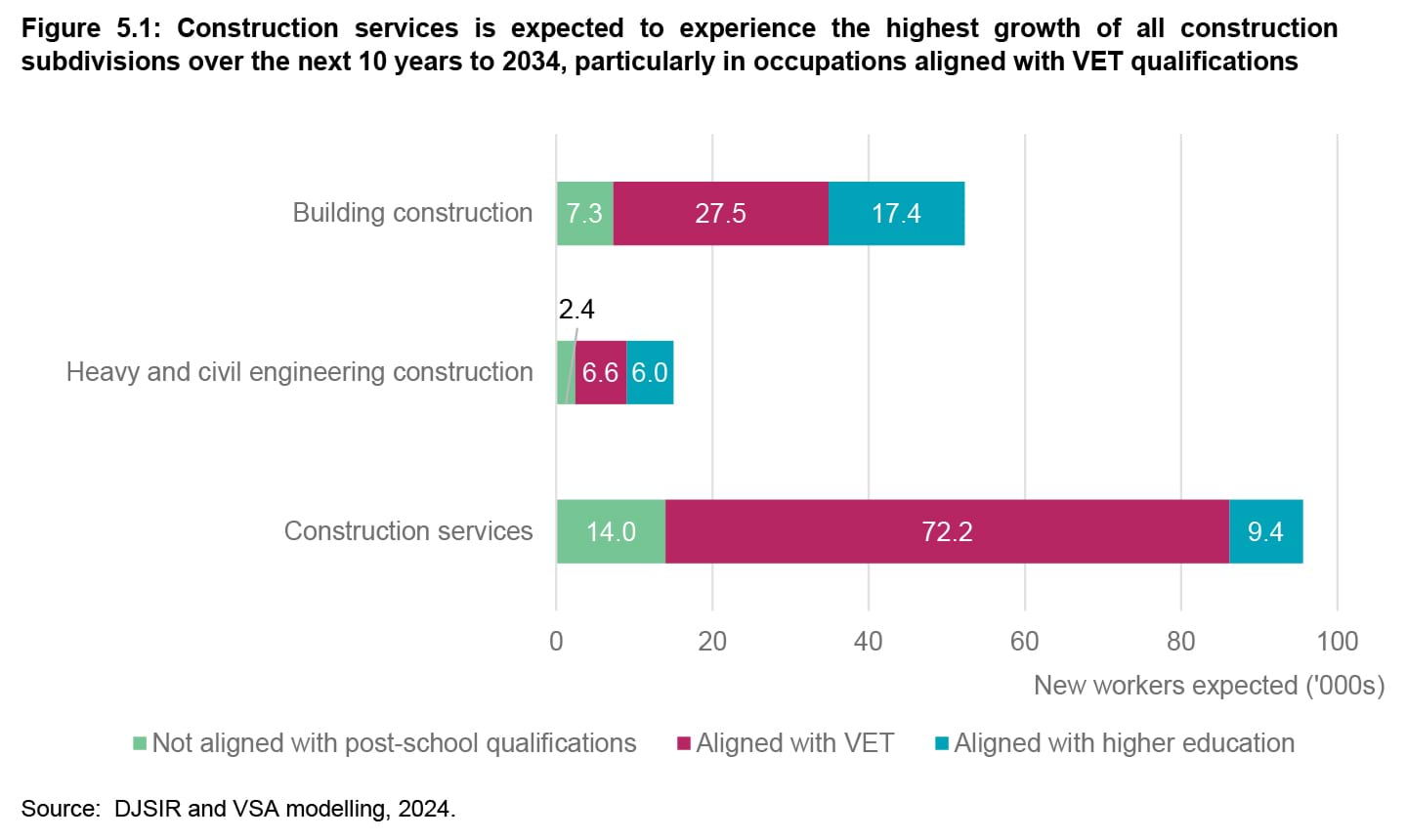Around 162,900 new workers are expected to join the construction industry between 2024 and 2034.
Over the next 10 years, most new workers, around 95,600, will be in the construction services industry subdivision12, followed by building construction (52,300 new workers); and heavy and civil engineering construction (15,000 new workers).
About 65.2 per cent of new workers in construction are expected to gain employment in occupations that are generally serviced by VET but this varies significantly by subdivision. For example, in construction services and building construction, around 75 per cent and 53 per cent, respectively, will be in occupations that generally require VET. In heavy and civil engineering construction, around 44 per cent of new workers are expected in occupations that generally require VET.
Occupations in demand across construction include construction managers, electricians, carpenters and joiners, and plumbers. Across the construction industry subdivisions, this varies significantly, ranging from construction managers in building construction and heavy and civil engineering construction, to electricians and plumbers in construction services.
Table 5.1: Occupations in demand by construction industry subdivisions over 2024-34
| Construction industry subdivision | Employment 2024 | New workers expected (2024-34) | Top four occupations |
|---|---|---|---|
| Building construction | 100,900 | 52,300 | Construction managers Carpenters and joiners* Architectural, building and surveying technicians* Building and plumbing labourers |
| Heavy and civil engineering construction | 32,100 | 15,000 | Civil engineering professionals Earthmoving plant operators* Construction managers Building and plumbing labourers |
| Construction services | 234,200 | 95,600 | Electricians* Plumbers* Painting trades workers* Carpenters and joiners* |
| All construction | 367,200 | 162,900 | Construction managers Carpenters and joiners* Electricians* Plumbers* |
Note: * Designates occupations whose main education and training pathway are aligned with a VET qualification (skill levels 2 to 4).
Source: DJSIR and VSA modelling, 2024.
Updated
